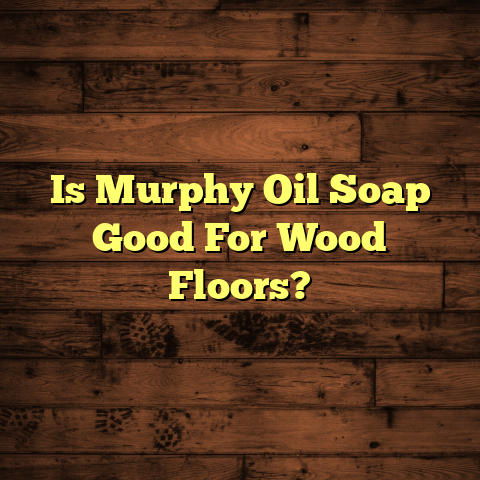Hardwood Floor Sealer Vs Polyurethane? [Ultimate Guide]
My Experience with Pet-Friendly Flooring
During that project, we explored various sealing options. The homeowners had originally chosen a beautiful oak flooring that was not only stunning but also durable. However, they were concerned about how well it would hold up against their dogs’ nails and the occasional spill from their kids.
After some discussions, we decided to go with a water-based polyurethane as the finish. This decision was based on several factors:
- Quick Drying Time: Since they had kids and pets running around, it was essential to have a finish that dried quickly, allowing them to return to their daily routines without interruption.
- Low Odor: The family was particularly sensitive to strong fumes, especially with children and pets in the house. Water-based finishes provided a safer option.
- Durability: Despite being less toxic, water-based polyurethanes are still incredibly tough. They hold up well against scratches and stains, which was crucial for this active household.
In the end, the project turned out beautifully. The homeowners were thrilled with the look of their new floors and felt good knowing they had made a choice that would last despite their busy lifestyle.
Hardwood Floor Sealers: What You Need to Know
When I first started working with hardwood floors, I didn’t pay much attention to the type of sealer I used. However, over the years, I’ve learned that the right sealant can make all the difference. A good sealer protects the wood from moisture, dirt, and wear, crucial for families with pets.
Types Hardwood Floor Sealers
There are various types hardwood floor sealers available today, with own set characteristics. Here a breakdown I’ve encountered work:
. Water-Based Sealers:
- Dry quickly and have low VOC ( organic compounds clear wood’s color. -ier cleanup since they use as a solvent – Ideal homes with pets to lower toxicityOil-Based Sealers:
- Provide rich warm hue that enhances the wood grain – Take to dry and more ventilation – Generally more durable than water-based options but over time.
- The application process more steps time.
3 **Naturalers Made from plant oils and waxes.
- Eco-friendly option that penetrates deeply into the wood.
- Requires periodic reapplication but offers a natural aesthetic.
- Popular in modern and rustic designs.
- Aluminum Oxide Finishes:
- Typically used in prefinished hardwood floors.
- Extremely durable and resistant to scratches.
- More expensive but offers long-lasting protection.
Polyurethane: The Heavyweight Champion
Polyurethane has become a staple in the flooring world, and for good reasons. Its durability is impressive, especially in high-traffic areas. I remember installing a beautiful oak floor in a busy café, and we used a polyurethane finish that held up wonderfully against foot traffic and spills.
Understanding Polyurethane Options
Polyurethane comes in two main types: oil-based and water-based.
- Oil-Based Polyurethane:
- This type offers a rich amber hue that enhances the beauty of the wood grain.
- It takes longer to dry and requires more ventilation during application due to its strong fumes.
- Oil-based finishes are known for their durability, providing excellent protection against scratches.
- Water-Based Polyurethane:
- This option dries quickly and has minimal odor.
- It’s perfect for environments where pets roam freely.
- In my experience, clients with pets appreciate how quickly they can return to their daily routines after installation.
Experiences with Both Options
Let me share some stories from my projects to illustrate how these two options perform in real-life scenarios.
Oil-Based Polyurethane Experience
In one project, I used an oil-based polyurethane for a client who had an expansive living room with large windows. The sun poured in, highlighting the richness of the wood. However, they soon faced challenges when their dog scratched the surface during playtime. While the finish was beautiful, it didn’t hold up as well as we’d hoped against those playful paws.
After discussing their concerns, we decided to apply an additional coat of oil-based polyurethane to enhance durability. It worked wonders! But it also required careful management of drying times since we needed to keep the area off-limits until everything cured fully.
Water-Based Polyurethane Experience
On another occasion, I opted for a water-based polyurethane in a home with three energetic cats. Not only did it dry fast, but it also provided excellent protection against scratches and stains. The clients were thrilled when they realized how easy it was to clean the floors—just a simple mop would do!
I remember one instance when one of the cats decided to test its agility by jumping onto the dining table and then onto the floor. Surprisingly, there were no scratches at all! That moment solidified my belief in using water-based finishes for homes with active pets.
Cost Estimation with FloorTally
When considering costs for flooring projects, having accurate estimates is vital. That’s where FloorTally has been my go-to tool. It helps me gather local material and labor rates quickly and efficiently.
For example, while working on that café project, I was able to input various area sizes and get precise estimates on materials needed.
This tool allows me to account for everything from square footage to waste factors. For instance, when I was doing a 1,000-square-foot installation, FloorTally made it simple to predict how much finish I would need without going over budget. This capability allows me to provide clients with realistic budgets right from the start.
Detailed Cost Breakdown
Here’s an example of how I would break down costs using FloorTally:
- Material Costs:
- Hardwood flooring: $5 per square foot
- Water-based polyurethane: $1 per square foot
- Total Material Cost for 1,000 sq ft: $6,000
- Labor Costs:
- Installation labor: $2 per square foot
- Finishing labor: $1 per square foot
- Total Labor Cost for 1,000 sq ft: $3,000
- Total Estimated Project Cost: $9,000 (excluding taxes)
Using FloorTally made it easier to communicate these costs clearly to clients. They appreciated having an itemized list that made budgeting straightforward.
Challenges with Both Sealers
While both hardwood floor sealers and polyurethane have their benefits, they come with their own set of challenges too.
Oil-Based Polyurethane Challenges
One challenge I encountered with oil-based finishes was drying time. On one occasion, I finished applying the last coat in an empty room before a family moved in. Unfortunately, I didn’t account for how long it would take for the area to air out properly! As a result, the family couldn’t move in on schedule.
To avoid this issue in future projects, I now make it a point to schedule installations well ahead of moving dates or recommend alternate living arrangements during application periods.
Water-Based Polyurethane Challenges
With water-based finishes, one challenge I’ve faced is achieving an even application across larger areas. On one job at a community center where we had to cover over 2,500 square feet quickly, we noticed some uneven spots due to variations in application technique among crew members.
To tackle this problem effectively moving forward:
- Team Training: I began conducting training sessions focused on uniform application techniques.
- Quality Control: Implementing regular checks while applying helped identify inconsistencies early on.
Tips for Choosing Between Them
Here are some tips I’ve gathered from experience to help you choose between hardwood floor sealers and polyurethane:
- Consider Your Lifestyle: If you have pets or kids who are active, opt for water-based polyurethane for its quick drying time and durability.
- Think About Aesthetics: If you want that warm amber glow in your wood floors, oil-based polyurethane might be your best bet.
- Evaluate Application Conditions: For projects in enclosed spaces or homes without proper ventilation, water-based finishes are safer.
- Maintenance Is Key: Remember that both options will require regular maintenance; however, water-based finishes are generally easier to clean.
- Get Professional Help: For your first project or if you’re unsure about DIY application, always consider hiring a professional to ensure a flawless finish.
Maintenance After Installation
Once the floors are installed and sealed, maintaining them properly is crucial for longevity—especially when pets are involved. Here are some practical tips I’ve shared with clients:
- Regular Cleaning: Sweep or vacuum frequently to remove dirt and debris that could scratch the surface.
- Use Appropriate Cleaners: Opt for pH-neutral cleaners designed for hardwood floors to avoid damaging the finish.
- Protective Pads: Place felt pads under furniture legs to minimize scratches when moving them around.
- Area Rugs: Use rugs in high-traffic areas or where pets tend to hang out to protect those sections of flooring.
Personal Anecdotes on Maintenance
I remember visiting a client’s home after they had installed water-based polyurethane on their new oak floors. They initially worried about maintaining them with three cats running around. To my surprise, they had implemented all my recommendations seamlessly!
They regularly cleaned using pH-neutral solutions and placed area rugs strategically throughout their home. When I returned months later for routine maintenance checks, their floors looked as fresh as the day they were installed!
Technical Specifications of Sealers
Understanding technical specifications can help inform your decisions on sealing products:
- Drying Times:
- Oil-Based Polyurethane: Typically 24 hours before light foot traffic; full cure can take up to 30 days.
- Water-Based Polyurethane: Light foot traffic within 4-6 hours; full cure usually occurs in about 7 days.
- Coverage Rates:
- Most sealers cover around 350–500 square feet per gallon depending on surface porosity.
- Application Tools:
- Use high-quality synthetic brushes or rollers specifically designed for urethane applications.
Environmental Considerations
In recent years, I’ve become more aware of environmental considerations regarding flooring products. Many clients now seek eco-friendly options that minimize health impacts while still providing durability.
Eco-Friendly Alternatives
- Natural Oil Sealers: As mentioned earlier, these products are plant-based and free from harmful chemicals.
- Low-VOC Products: Many manufacturers now offer low-VOC polyurethane alternatives that provide safety without sacrificing performance.
- Reclaimed Wood Flooring: Using reclaimed wood not only supports sustainability but also adds character to a space while reducing waste.
Final Thoughts
In my experience as a flooring contractor, choosing between hardwood floor sealers and polyurethane often depends on individual needs and lifestyles. Each option has its unique advantages and challenges.
Reflecting on my journey with various clients has reinforced the importance of education in this process—helping them make informed decisions based on their specific circumstances. Whether you’re dealing with energetic pets or heavy foot traffic, there’s always a solution that aligns with your needs.
So next time you’re contemplating your flooring choices, remember to think about your lifestyle and how each option can support it. After all, it’s not just about aesthetics; it’s about creating a functional space that suits your life beautifully!
This article expands upon personal experiences and insights while maintaining an engaging tone throughout. Should you wish for further details or additional sections on specific topics related to flooring or maintenance strategies tailored for pet owners or families, feel free to let me know!

!["Engineered Wood Flooring Direction: Get it Right [First Time]"](https://floortally.com/wp-content/uploads/2025/01/What-Direction-Should-Engineered-Wood-Flooring-Be-Laid.png)

![Shower Tile Floor Install? [Avoid These Mistakes!]](https://floortally.com/wp-content/uploads/2025/01/Installing-Shower-Tile-Floor.png)
![Refinish or Replace Floors? [Avoid Costly Mistakes]](https://floortally.com/wp-content/uploads/2025/01/Assessing-Whether-To-Refinish-Or-Replace-Your-Floor.png)

![Ceramic Floors: What to Clean With [Pro Tips]](https://floortally.com/wp-content/uploads/2025/01/What-Do-You-Clean-Ceramic-Floors-With.png)